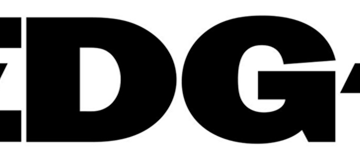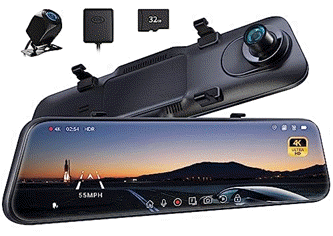Patrick Moorhead, Senior Contributor
2025-08-12 10:45:00
www.forbes.com
The latest move in the enterprise AI chess match adds some nice options to the AWS toolkit while raising broader questions about the Microsoft–OpenAI relationship.
SOPA Images/LightRocket via Getty Images
AWS made a splash last week when it announced day-of-launch availability of two new open-weight models from OpenAI for use on Amazon Bedrock and Amazon SageMaker. This means that AWS customers can now use the models via these managed services, especially for building new functionality with AI agents. The move also represents the latest development in the ongoing competition among the big cloud service providers to bring the best of enterprise AI to their customers, although this one feels a little different because of the traditionally tight relationship between Microsoft and OpenAI.
The same day these new models launched, I had a chance to talk through this news with Shaown Nandi, who leads the technical deal team worldwide for AWS, and I want to share my takeaways from that conversation and my perspective on what it all means.
(Note: AWS is an advisory client of my firm, Moor Insights & Strategy.)
What ‘Open-Weight’ Means And Why It’s Important
Open-weight models have parameters that are visible to the people using them, though the underlying training data isn’t visible like it would be in a fully open-source model. Still, having access to the parameters means that AWS customers can fine-tune the models for their specific use cases. The two models just launched — gpt-oss-120b and gpt-oss-20b — are the first open-weight models that OpenAI has released since GPT-2, way back in 2019. In terms of intelligence level, OpenAI says that they are positioned between GPT-3 and GPT-4.
For AWS customers, these two new entrants join open-weight models from Meta, Mistral and other makers that are already supported on Bedrock. Customers will be able to run the new models, edit them and fine-tune them within the AWS toolset and infrastructure — without interacting with OpenAI directly.
You can bet that many of the use cases already being set in motion by AWS users involve agentic workflows. The two new models are text-based, not multi-modal, which makes them well-suited for agentic use cases like browsing the web or navigating software. Nandi also assured me that the new models will have full access to the same Bedrock infrastructure capability as any other model. (As usual with a model introduction like this, AWS is launching it region by region, in this case starting with the U.S. West.)
How AWS And OpenAI Benefit From This Linkage
First, this helps AWS continue its long tradition of (trying to) offer the widest range of choice to its customers. In fact, I see that outlook as being baked into the Amazon ethos, going all the way back to the company’s main web storefront. Nandi summarized his view of the AWS AI mindset when he told me, “Offering customers choice is something we’ve been ultra-focused on, probably since we launched Bedrock back in 2023.”
I talk with a lot of CIOs, CTOs and CEOs week in and week out — especially about their technology purchases and rationales — and I can confirm that these people want optionality, which AWS is definitely bringing with the new OpenAI models. When I shared this observation with Nandi, he pointed out that having the choice to work with any of the top AI models via AWS also provides “air cover” for executives’ AI decisions. Your board of directors wants to know that you’re working with the right providers; when you can tell them that you’re working with the biggest CSP using the biggest variety of open models, that’s a fruitful path into a conversation about what you’re enabling in terms of innovation and productivity.
So what’s in it for OpenAI? Nandi can’t speak for another company, of course, and OpenAI is well-known for not answering questions. But I can share an industrywide perspective that’s grounded in just how quickly the enterprise AI environment is shifting. All of the model creators — independents like OpenAI and hyperscalers like AWS alike — can see how fast things are changing. New models are dropping all the time, and disruptive events such as the debut of DeepSeek at the start of this year force everyone to reconsider the best ways to build and train models efficiently and cost-effectively.
OpenAI set off the AI gold rush when it launched ChatGPT late in 2022, but it’s hardly the only game in town now. It has compelling technology, but there are enterprise customers that are tooled for AWS rather than Azure, and if those customers can’t easily access OpenAI via AWS, they may turn to some other model provider. Conversely, being so readily available via Bedrock and SageMaker could benefit OpenAI in terms of building out its ecosystem, meeting customers where they already live — and simply moving fast.
How AWS Customers Stand To Benefit
The customers that are already getting under the hood of this thing are sure to be connecting existing applications to the new models to see how they perform. Naturally, they’ll be looking for ways to improve performance and drive costs down. According to the press release accompanying the launch, AWS says that the new models “are 10x more price-performant than the comparable Gemini model, 18x more than DeepSeek-R1 and 7x more than the comparable OpenAI o4 model.” I’d like to judge those numbers for myself against real-world field results; it’s early days yet, but I’m sure I’ll have more insights to validate or challenge these claims in the coming months.
Setting aside the potential cost advantages, there are significant operational benefits I have no question about. First, being able to access OpenAI models through AWS tools you’re already using means that you don’t need to have a commercial agreement with OpenAI. Nothing against OpenAI, mind you — just that it’s way simpler to call up one of these models in SageMaker or Bedrock and try it out for a proof-of-concept when you don’t also have to go through a vendor-onboarding process or a set of engineering steps to tap directly into OpenAI’s technical ecosystem.
That also extends to your AI devs who are doing the actual work. They don’t need to learn a new platform or test out how well it works with their existing tools, nor do they need to rebuild their applications. Rather, they can stay within their current tools to access the new models and get down to work. If I were the engineering leader running an AI shop already tooled out for AWS, I would welcome this.
Nandi confirmed that his customers have been calling for this. Every month or two, they see new models being launched in the market that they’re curious to try because they think it might save them money, improve latency or bring some other benefit. They like using Bedrock to try out new models — and to run existing models from Meta, DeepSeek, Amazon itself and so on. And yet, Nandi told me, “‘You’re missing OpenAI’ — that’s what they would say.” Now that gap has been addressed.
AWS, OpenAI And Microsoft
So what does this mean for Microsoft? The company is doing pretty well, to the tune of $101 billion in profit for the fiscal year that ended on June 30. As part of that success, AI has helped drive Azure revenue to $75 billion in the past year. (AWS is above $100 billion annually.) Azure also provides a range of OpenAI models — including hot-off-the-presses GPT-5 variants — that goes well beyond the two open-weight models AWS just launched.
That said, Microsoft’s long-running relationship with OpenAI is complex, and at times it has been vexed. I don’t want to read too much into the availability of a couple of slick new open-weight models via the biggest CSP AI platform in the world. Yet the lock-in that Microsoft enjoyed until last week for all things OpenAI was the first angle that popped into my head when I heard the AWS news.
At the moment — and surely for some years to come — there is plenty of AI business to go around. As Nandi pointed out during our conversation, “Agentic is super-early.” More than that, for all the enterprises building focused agents for different use cases, “They’re not looking for one general-purpose model for agents.” Rather, they want to find different models that supply the right price/performance for each use case. While they can do that with a single AI service provider — AWS, Azure, Google Cloud, Oracle, IBM — they probably won’t find it with a single AI model provider. AWS will of course be adding features to support the new open-weight OpenAI models in the weeks and months to come. And there’s no question these are nice additions to the AWS toolbox.
Maybe six months or a year from now, Microsoft’s loss of exclusivity with OpenAI in this instance won’t seem like a big deal. But I do wonder whether there could be a scenario where we look back on this as the first chink in the Microsoft–OpenAI armor.
Moor Insights & Strategy provides or has provided paid services to technology companies, like all tech industry research and analyst firms. These services include research, analysis, advising, consulting, benchmarking, acquisition matchmaking and video and speaking sponsorships. Of the companies mentioned in this article, Moor Insights & Strategy currently has (or has had) a paid business relationship with AWS, Google, IBM, Meta, Microsoft and Oracle.
Enhance your driving experience with the P12 Pro 4K Mirror Dash Cam Smart Driving Assistant, featuring Front and Rear Cameras, Voice Control, Night Vision, and Parking Monitoring. With a 4.3/5-star rating from 2,070 reviews and over 1,000 units sold in the past month, it’s a top-rated choice for drivers. The dash cam comes with a 32GB Memory Card included, making it ready to use out of the box. Available now for just $119.99, plus a $20 coupon at checkout. Don’t miss out on this smart driving essential from Amazon!
Help Power Techcratic’s Future – Scan To Support
If Techcratic’s content and insights have helped you, consider giving back by supporting the platform with crypto. Every contribution makes a difference, whether it’s for high-quality content, server maintenance, or future updates. Techcratic is constantly evolving, and your support helps drive that progress.
As a solo operator who wears all the hats, creating content, managing the tech, and running the site, your support allows me to stay focused on delivering valuable resources. Your support keeps everything running smoothly and enables me to continue creating the content you love. I’m deeply grateful for your support, it truly means the world to me! Thank you!
|
BITCOIN
bc1qlszw7elx2qahjwvaryh0tkgg8y68enw30gpvge Scan the QR code with your crypto wallet app |
|
DOGECOIN
D64GwvvYQxFXYyan3oQCrmWfidf6T3JpBA Scan the QR code with your crypto wallet app |
|
ETHEREUM
0xe9BC980DF3d985730dA827996B43E4A62CCBAA7a Scan the QR code with your crypto wallet app |
Please read the Privacy and Security Disclaimer on how Techcratic handles your support.
Disclaimer: As an Amazon Associate, Techcratic may earn from qualifying purchases.










































































































